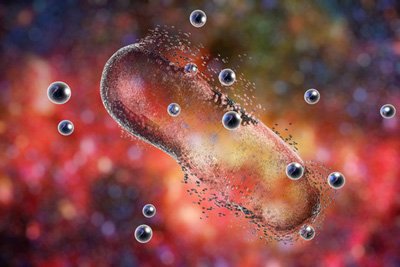A simple new platform for antibiotic discovery
Posted: 23 May 2016 | Victoria White, Digital Content Producer | No comments yet
Harvard researchers have created a new platform for antibiotic discovery that, they say, may go a long way to solving the crisis of antibiotic resistance…


Harvard researchers have created a new platform for antibiotic discovery that, they say, may go a long way to solving the crisis of antibiotic resistance.
In a study, Andrew G. Myers and colleagues describe “a platform where we assemble eight (chemical) building blocks by a simple process to make macrolide antibiotics” without using erythromycin, the original macrolide antibiotic, and the drug upon which all others in the class have been based since the early 1950s.
Erythromycin, which was discovered in a soil sample from the Philippines in 1949, has been on the market as a drug by 1953. “For 60 years chemists have been very, very creative, finding clever ways to ‘decorate’ this molecule, making changes around its periphery to produce antibiotics that are safer, more effective, and overcome the resistance bacteria have developed,” says Myers, Amory Houghton Professor of Chemistry and Chemical Biology in Harvard’s Department of Chemistry and Chemical Biology. “That process is semisynthesis, modifying the naturally occurring substance.”
In contrast, the process described in the new study involves using “eight industrial chemicals, or substances derived from them,” Myers says, and manipulating them in various combinations and then testing the products against panels of disease causing bacteria. This allows us to make new “new compounds in fewer steps than was previously possible.”
Two compounds show efficacy in initial testing
For a host of reasons – from the difficulty of developing antibiotics to the relatively low return on investment they offer, by 2013 the number of international pharmaceutical companies developing antibiotics had dwindled to four. And in each five year period from 1983 through 2007, the number of new antibiotics approved for use decreased.
One thing that has complicated antibiotic development is a perceived reluctance by federal agencies to fund the research. In fact, Myers says, his new antibiotic development system would have been impossible without support from a Harvard alum and his wife who are interested in science, and Harvard’s Blavatnik Accelerator Fund, which provided support for the initial creation of Myers’s company Macrolide Pharmaceuticals. Macrolide Pharmaceuticals has licensed the synthesis platform and aims to commercialise novel antibiotics for serious infections.
Two of the 350 compounds reported by the researchers, in initial testing, have shown efficacy against a bacterium that has become resistant to vancomycin.
Myers is quick to point out that the road from drug candidate to a treatment at the bedside is long, arduous, and expensive. “This is an early effort,” he said. “We have a lot of work ahead of us.” Some of the 350 compounds reported by the researchers will undergo more extensive testing to evaluate their potential as candidate drugs.
Related topics
Antibiotics
Related organisations
Harvard University



